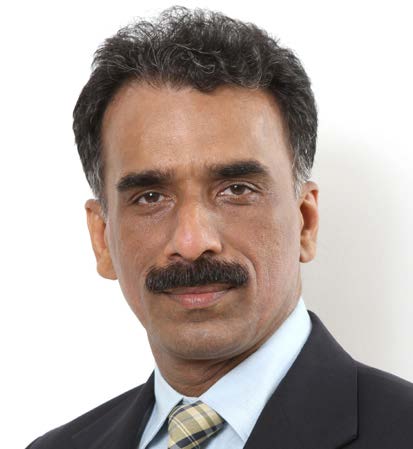Aesthetic Plastic Surgeon
BREAST REDUCTION

Dr Sandeep Sharma Consultant Plastic & Cosmetic Surgeon ‘Aesthetique’, Centre for Plastic & Cosmetic Surgery, Vadodara 24 years in practice
Dr Sandeep Sharma is a plastic and cosmetic surgeon practicing in Vadodara, Gujarat, and is the Medical Director of ‘Aesthetique’, Centre for Plastic & Cosmetic Surgery. He is the current National President of IAAPS – Indian Association of Aesthetic Plastic Surgeons. A graduate of Government Medical College, MS University, Baroda, he further trained and worked in London and Melbourne, Australia for seven years before returning back to practice in India. He has been an invited faculty to numerous national and international conferences and meetings. His field of special interest is breast surgery and regenerative surgery.
Know more about breast reduction from Dr Sharma:
Who is a good candidate for a breast reduction surgery? What is the type of patient you typically see for this procedure?
A woman with an overly large breast is a good candidate. But overly large is very subjective, ‘to each his own’, so to say. A young energetic sportswoman’s needs and expectations would be extremely different as compared to that of a healthy socialite with a sedentary lifestyle. Also, the size of one’s breast should be in sync with her overall body size. Personally, I do not look upon breast reduction surgery as a cosmetic surgery, for most of the women who request this procedure deal with a significant amount of inconvenience or difficulty because of the heavy weight and large size of their breasts. Common problems are pain in the breast, shoulder pain because of bra strap weight, backache or lower neck pain, infection under the breast due to moisture or friction, discomfort during physical activity and problems with choice of clothing.
Over the years, I have operated on all age groups – from 17-year-olds to 60-year-olds and above. The commonest patient age group is in the late 30s and early 40s, when they have completed their family and are reasonably settled in life. I also get more than my fair share of obese women seeking this procedure.
How can best results be derived from this treatment? Tell us about the surgical technique adopted by you?
Breast reduction surgery is one of the more challenging cosmetic surgeries we plastic surgeons do. Thus, selecting a qualified plastic surgeon is a good start. There are far too many doctors (even paramedics!) in our country, masquerading as plastic surgeons. Ours is too vast a country, with heavy population density, to expect the government authorities to keep an effective check on such unethical activities. So, it is wise and smart to check their qualifications, institute of qualification and affiliation to credible organisations. In this case, the Indian Association of Aesthetic Plastic Surgeons-IAAPS is the only aesthetic plastic surgery body in India. In addition to this, choosing a plastic surgeon with specific experience in this procedure helps further.
Younger patients, good skin quality and no or minimal comorbidities, generally get better cosmetic outcomes.
There are three to four popular techniques of breast reduction surgery and I choose the one best suited to an individual rather than have a one-size-fitsall approach. Having said that, the one I do most commonly is the superomedial pedicle technique. My advice is based on the individual’s condition, breast composition, amount of reduction desired and her personal preferences.
What is the recovery time for a breast reduction surgery and what does the posttreatment care involve?
Patients usually go home the same day.A few may need to stay overnight, especially if they require a temporary drainage tube. The first dressing is done at five to seven days, at which time, the patient is fitted into a bra. This, then needs to be worn 24 x 7 for the next few months. Allowing for age, weight and fitness, one can be back to work with light duties within the first and second week and resume regular duties at three to four weeks. Most of the normal activities, including some form of mild exercise, can be resumed after three weeks. Following ones regular routine, including gym, can begin in four to five weeks.
Any contraindications involved that one should be aware off? Also, is there anything the patient must not do after the procedure?
The fitter one is, the quicker the recovery and better the outcome, with lesser chances of complications. Certain medical conditions and being on certain medications like blood thinners and steroids can be relative contraindications to surgery. Following the post-operative plan and not over-exerting assures an uneventful recovery. .
Which do you consider as your most challenging as well as successful case study for this treatment, and why?
The most challenging cases include that of single, young women who entrust me with shaping the most important (and attractive) organ of their feminity and sexuality. The fact that a less than optimal outcome can significantly affect their sexual and marital life is not lost on me.
Although breast reduction patients are one of the happiest patients in my practice, my most satisfying experiences have been when mothers, whom I have operated on, bring along their daughter saying that “I don’t want her to go through the difficulty, inconvenience and suffering that I went through,” and hence, getting me to address their daughters’ problem too.
Fitter one is, quicker the recovery and better the outcome, with lesser chances of complications.

Picture: For representational purpose